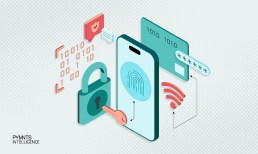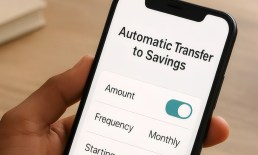Data is frequently said to be the oil of information — the necessary commodity without which the entire connected economy simply cannot run. Because no matter the issue — potential threats and privacy issues, connecting consumers to new modes of interaction, making new integrations possible between businesses — the emerging connected economy is about data, as Sudhir Jha, senior vice president and head of Brighterion, told Karen Webster in a ConnectedEconomy™ conversation.
The good news, according to one recent report, is that the C-Suite is starting to get it — 78 percent of all companies are engaged in widespread artificial intelligence (AI) initiatives, compared to 65 percent before the pandemic.
And that sudden rush of awareness about the power of connectivity that data unlocks, Jha said, can in many ways be attributed to the pandemic itself — and how it forced connectedness and data’s power to bridge their gaps and quickly moved from the background into the absolute foreground for business leaders.
“To give credit to the companies, I think they all understood that AI was going to play a big role,” he said. “It wasn’t that they didn’t expect it, or that they didn’t believe in the technology. But it was hard for them to justify a big investment. So they could do small steps, and there was a much longer period where we were doing a lot of experimentation without a lot of really big uses of AI. What happened with the pandemic was a ‘do or die’ kind of situation. Prioritization became easier.”
The digital shift necessitated the use of AI, and widened the playing field for organizations across verticals to rebuild their customer experience in a way that reconnected them to a digitizing environment, Jha said.
Some segments, like financial services, were already a bit ahead of the game in this regard — AI investments with an eye toward rewriting the infrastructure of connectedness were already well underway even in pre-pandemic times. Retail players, on the other hand, have gone from gingerly sticking a toe into the water to diving in full force.
Advertisement: Scroll to Continue
Historically slow segments like healthcare have remained somewhat “laggard,” Jha said, as they’ve had to juggle a lot of priorities over the last year or so. But even there, he noted, the captivating power of connectedness, guided by AI’s data-interpolating power, is starting to make a visible difference in how it is provided.
And then, Jha explained, many of the things powered by AI don’t get a lot of headline coverage, but are changing the ways business is done across verticals. Some examples include home appraisals being done by drones instead of human appraisers, farms getting assessments of things like fertilizer and food needs for their crops, and credit evaluations to make sure that more of the right people are matched with the proper credit limits.
Use cases tend to spawn additional use cases when it comes to AI, said Jha, creating connections between systems and infrastructure that have never before existed, and creating interactions that are smoother, more seamless and also safer and more secure than they’ve ever been.
“There is always some mistrust in new technology,” Jha said. “And so the more [AI] can provide value, the more we can provide these seamless experiences. Consequently, the more we can make the business commerce as good, if not much better than, physical experiences, we will have more and more adoption.”
Building Trust
But building that trust among consumers isn’t just a matter of commonality — it’s a matter of building it in a way that respects user privacy. It’s about being transparent with consumers and making it clear when and how their data is being harvested and applied — but it has to go further to ensure that the right entities are harvesting the right data.
The weather app, for example, doesn’t need an exact location to access information for users in the same way that a navigation app does. Simply entering a zip code should be sufficient — and if apps are forcing users to give up more specific and personal data, that is something of a misuse, said Jha.
The more we can build into AI systems, the better the systems will run and be trusted by consumers. Building an AI system to that standard won’t be the work of a single entity or set of legislations and regulators, he said, but a team effort between developers and government. Regulation isn’t going to solve the problem, given how it tends to fall behind technological innovation — but it can and likely will set the parameters that innovators can work within to build the next generation of AI’s data modeling capacity, said Jha.
Today, he said, as companies want to expand their access to data, they must also expand their firms via acquisitions — the shoe company that buys an accessories firm and an apparel startup to build out a conglomerate, for example. Part of that is driven by a desire to attract a bigger client stream with more products, but part of it is looking to grab access to a richer set of data to build on. The acquisitions are necessary, said Jha, because today’s AI models are built on unitary data streams — but in the future, that won’t necessarily be the case.
“If you really think about it, technology and AI, in particular, can stitch together multiple corporations very easily, where you don’t have to actually own every piece, but you can provide a service,” explained Jha. “The model can be created in a way that the data stays with each corporation, but the model actually can access those data points and include them. I think as we can leverage the data from multiple corporations without explicitly transferring and sharing the data and bringing it to one place, that is going to be compelling.”
This remains a new and emerging area of research, Jha said, but one that will hopefully emerge over the next few years so that companies can share some data. In fact, the future of the connected economy depends on it, as it powers a lot of separate ecosystems being able to sync up and act as one when it comes to serving the consumer in a way that delivers convenience without feeling intrusive.



